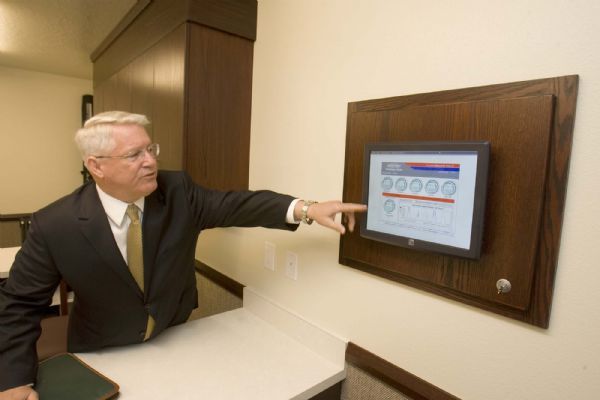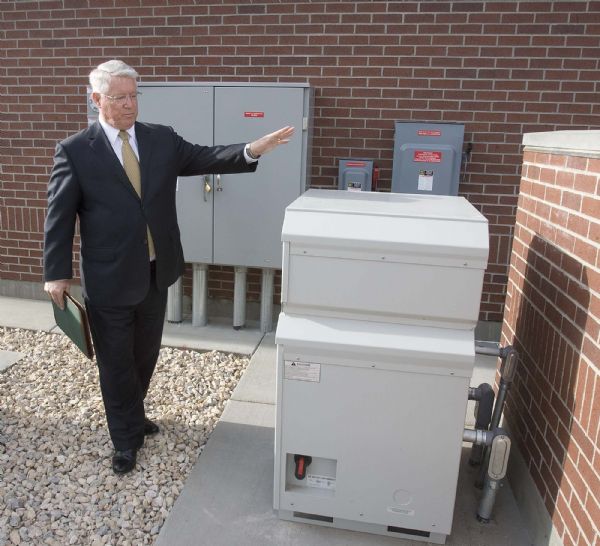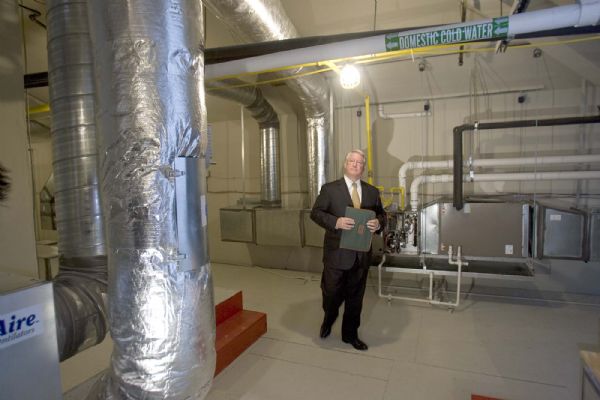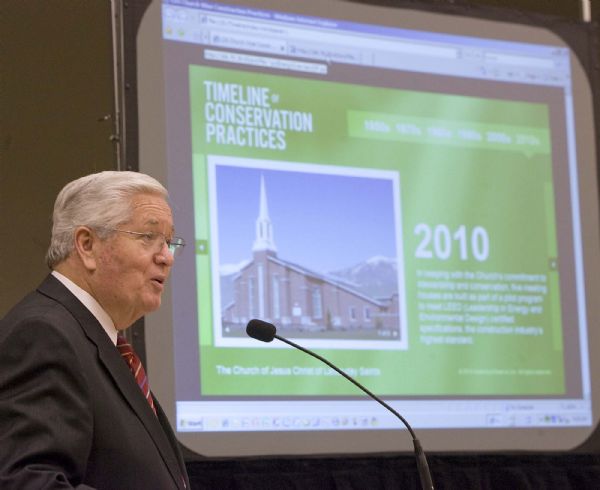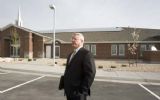This is an archived article that was published on sltrib.com in 2010, and information in the article may be outdated. It is provided only for personal research purposes and may not be reprinted.
Mormons who worship at a new "green" meetinghouse at the edge of Farmington Bay will be able, at a glance, to see the good fruits of 156 solar panels on the building's south roof.
A monitor in the new stake center's library not only will show the number of megawatts the panels are producing that hour, day and week, but also will translate that into the number of toasters, light bulbs and hair dryers that could be powered.
The building's hour-by-hour electrical use and its carbon-emission savings also will be posted, says Dean Davies, managing director of physical facilities for The Church of Jesus Christ of Latter-day Saints.
"Our members, youth groups and children," Davies says, "can come in and see."
For while the Utah-based faith moves toward "green" construction in all its meetinghouses -- a move signaled this week during a tour of the Farmington stake center prototype -- it's important that rank-and-file Mormons know they are to be stewards of the environment as well.
"It's making the members aware that they have a responsibility," Davies says. "The church can do it institutionally, but they ought to be participating in the same way."
Mormons advocating environmental awareness are thrilled by the news of "green" meetinghouses.
"I don't think it could be overstated, how important this is," says George Handley, a humanities professor at Brigham Young University with interests in eco-criticism and eco-theology. "It teaches a number of things simultaneously. It's a very strong statement for environmental stewardship, that we recognize religion has a very vital role to play in stewardship."
Handley, a high councilman in his stake, often speaks of the issue at LDS firesides and in other settings.
"The membership of the church is very, very hungry for that kind of instruction," he says. "Most people are so eager to know, 'What can I do about buying food, consuming materials, heating and lighting my home?' "
Handley hopes the 13.8 million-member faith will incorporate such instruction as part of its "Provident Living" program, which emphasizes self-reliance.
Allen Leigh, a retired computer programmer in South Jordan, lauds his church's move.
"It's a very positive step forward," says Leigh, who has written an essay outlining the religious basis for Earth stewardship.
He noted the LDS Church's decision to turn off temple lights worldwide last year for Earth Hour.
"That was a visible sign to the world as well as the LDS people," he says. "It's not a matter of a political viewpoint. It's a gift from God we need to preserve."
Nonetheless, Leigh says, it might take a couple of generations for Mormons to fully adopt conservation in their own lives.
"It literally takes decades for people to change attitudes," he says. "We're all creatures of habit, and we're all used to having unlimited energy available."
Indeed, the church's move toward "green" construction is not winning universal praise.
On online forums, contributors are debating whether it should be construed as a political statement about climate change.
"Oh, no, the LDS Church is buying into the enviro-whacko, Al Gore hype," writes GWB on a Deseret News comment board.
But "Droopy," writing on Mormon Apologetics and Discussion Board, dismisses such a notion.
"I am of the highest doubt that the church will ever have anything to do with the environmental movement or its various fashionable clichés and generational political fads."
The Rev. Diana Johnson, an Episcopal priest and director of Utah Interfaith Power & Light, says she was happy to see LDS leaders finally go public with one of the church's many environmentally friendly initiatives.
The fact the church is worldwide and hierarchical means such actions have a big effect, she says. "That's the power of it," Johnson says. "Their members listen to what they say and look at what they do."
Presiding LDS Bishop H. David Burton says the initial cost-benefit analysis of the prototypes is so encouraging that he expects the church soon to adopt "green" construction more widely.
That analysis is not just about money, he says. "The payback comes in terms of other nonquantifiable kinds of things ... to be a part of cleaning up the atmosphere and environment in which we live."
The LDS Church is building five "green" prototypes in Utah, Arizona and Nevada that will guide the design of future meetinghouses.
The Utah-based faith builds more than 200 a year worldwide. It also may retrofit some of the existing 17,000 meetinghouses and their landscaping.
During a tour of one of the solar-powered prototypes in Farmington this week -- the building will open in about a month to six weeks -- church leaders said the structure will be 30 percent more efficient than any previous meetinghouse. It's expected to offset 2 million pounds of carbon emissions that coal-fired electrical generation would produce over 25 years.


